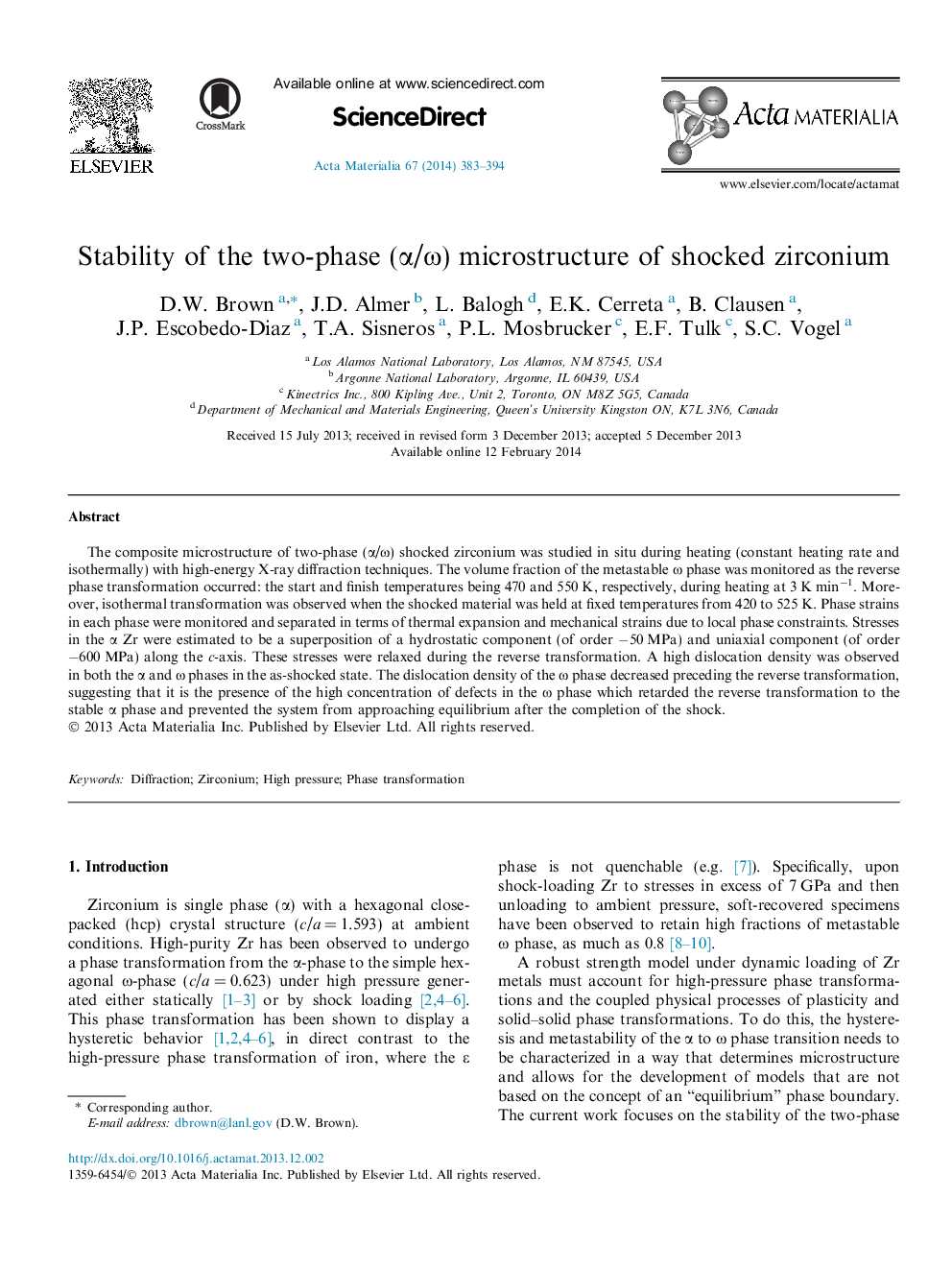| Article ID | Journal | Published Year | Pages | File Type |
|---|---|---|---|---|
| 7882655 | Acta Materialia | 2014 | 12 Pages |
Abstract
The composite microstructure of two-phase (α/Ï) shocked zirconium was studied in situ during heating (constant heating rate and isothermally) with high-energy X-ray diffraction techniques. The volume fraction of the metastable Ï phase was monitored as the reverse phase transformation occurred: the start and finish temperatures being 470 and 550 K, respectively, during heating at 3 K minâ1. Moreover, isothermal transformation was observed when the shocked material was held at fixed temperatures from 420 to 525 K. Phase strains in each phase were monitored and separated in terms of thermal expansion and mechanical strains due to local phase constraints. Stresses in the α Zr were estimated to be a superposition of a hydrostatic component (of order â50 MPa) and uniaxial component (of order â600 MPa) along the c-axis. These stresses were relaxed during the reverse transformation. A high dislocation density was observed in both the α and Ï phases in the as-shocked state. The dislocation density of the Ï phase decreased preceding the reverse transformation, suggesting that it is the presence of the high concentration of defects in the Ï phase which retarded the reverse transformation to the stable α phase and prevented the system from approaching equilibrium after the completion of the shock.
Related Topics
Physical Sciences and Engineering
Materials Science
Ceramics and Composites
Authors
D.W. Brown, J.D. Almer, L. Balogh, E.K. Cerreta, B. Clausen, J.P. Escobedo-Diaz, T.A. Sisneros, P.L. Mosbrucker, E.F. Tulk, S.C. Vogel,
